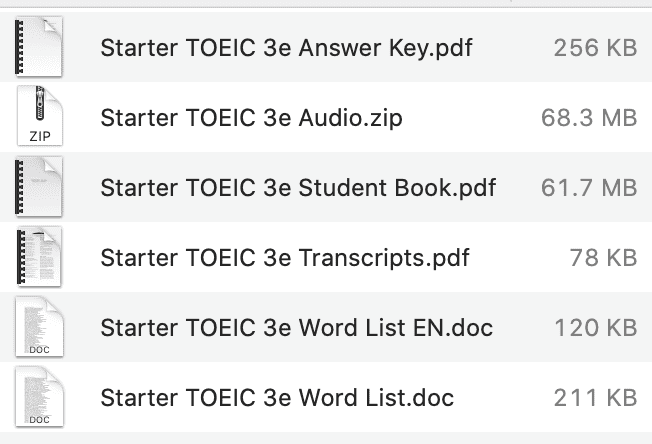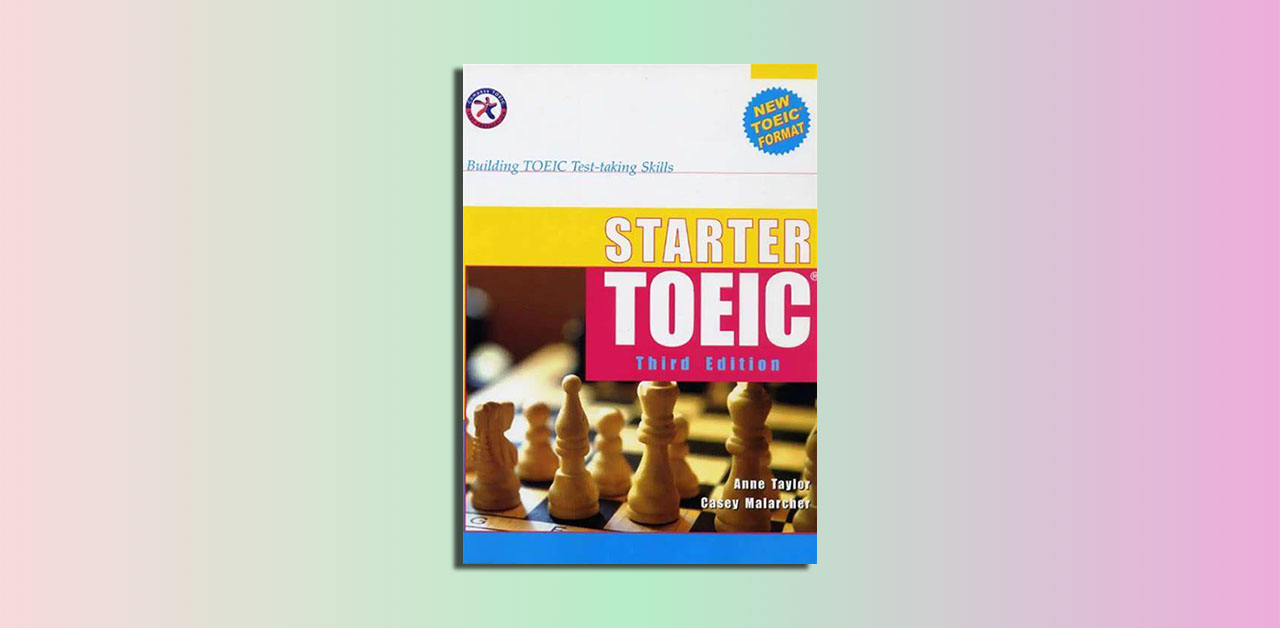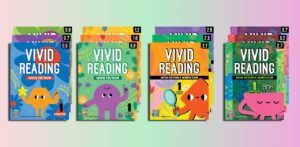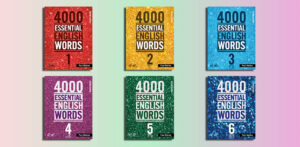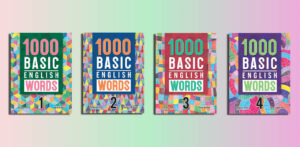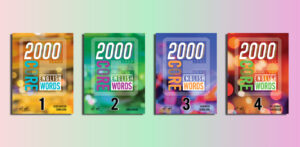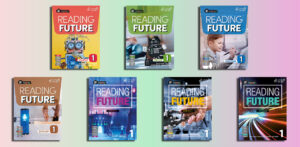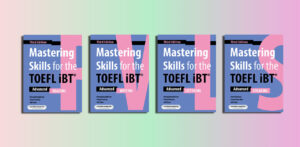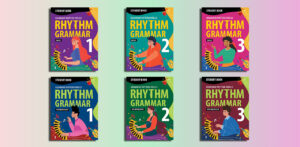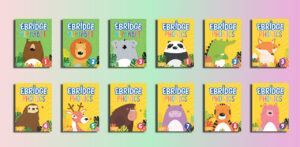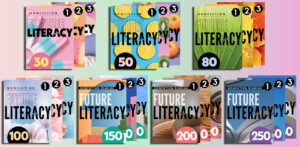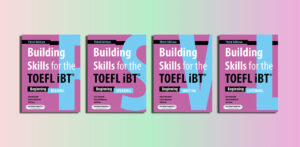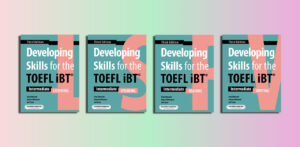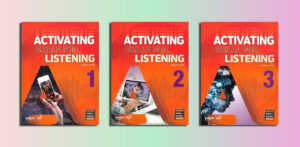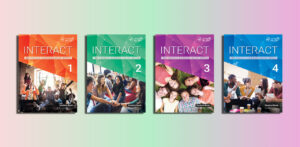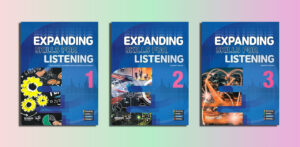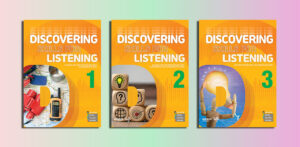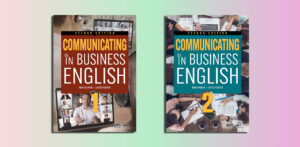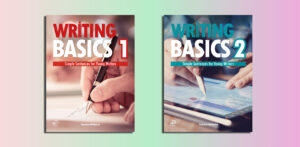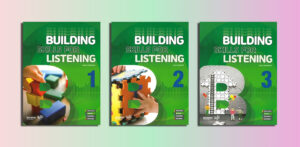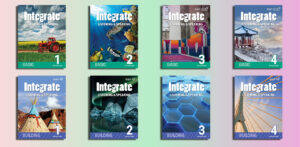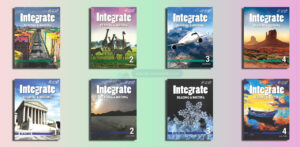Starter TOEIC 3rd Edition (PDFs, Resources)
Starter TOEIC 3e Student Book.pdf – Sample: Click
Answer Key – Audio – Student Book – Transcripts – Word List
| Image | Name | Price | Buy |
|---|---|---|---|
| Starter TOEIC 3rd Edition (PDFs, Resources) | $10 |
✅ Get Starter TOEIC 3rd Edition (PDFs, Resources): $10 for all files
๏ Other payment methods: Click here
Overview of “Starter TOEIC 3rd Edition” by Compass Publishing
Contents
| ✅ Coursebook: | Starter TOEIC 3rd Edition |
| ✅ Author: | Anne Taylor, Casey Malarcher |
| ✅ Publisher: | Compass Publishing |
| ✅ Levels: | B2 |
| ✅ English type: | International English |
| ✅ For: | Toeic |
“Starter TOEIC 3rd Edition”, published by Compass Publishing on September 1, 2006, is a beginner-friendly test preparation book designed for learners starting their preparation for the TOEIC (Test of English for International Communication). Authored by Anne Taylor and Casey Malarcher, with editorial input from Andrea Janzen, this edition targets upper-intermediate learners with basic English proficiency (typically aiming for TOEIC scores of 200–500). It serves as an accessible introduction to the TOEIC format, focusing on foundational grammar, vocabulary, and test-taking skills.
Purpose and Target Audience
The book’s primary goal is to familiarize beginners with the TOEIC’s structure and content while building confidence in English usage. It bridges general language learning and standardized test preparation, making it ideal for:
- Learners new to the TOEIC.
- Students transitioning from basic English studies to test-focused practice.
- Self-learners or classroom students needing a structured, supportive resource.
Structure and Content
The book is divided into three main sections, each designed to progressively prepare students for the TOEIC:
Chapter 1: Grammar Foundations
- Focuses on twelve essential grammar topics frequently tested on the TOEIC, such as verb tenses, infinitives, gerunds, comparatives, and pronouns.
- Provides clear explanations, examples, and practice exercises to reinforce understanding.
- Aimed at beginners but may require teacher support for absolute novices due to its density.
Chapter 2: Mini Practice Tests
- Contains twelve themed mini tests, each tied to a grammar target from Chapter 1.
- Uses simplified, contextualized language to develop both grammar and vocabulary skills.
- Helps students apply concepts in a TOEIC-like format, building familiarity and confidence.
Chapter 3: Full-Length Practice Test
- Offers a complete 200-question TOEIC practice test (listening and reading sections).
- Mirrors the real exam’s format and difficulty, tailored to be challenging yet achievable for beginners.
- Allows students to assess progress and practice time management.
Key Features
- Audio Support: Includes three audio CDs (or an MP3 CD in some editions) with recordings for the listening sections of the mini tests and full practice test. Audio quality varies but is functional for practice.
- Supplementary Materials: Features tape scripts, answer keys, and worksheets, supporting self-study and review.
- Test Strategies: Provides general TOEIC information and tips for approaching each section.
Strengths
- Structured progression from grammar to full practice enhances learning.
- Simplified content makes TOEIC preparation approachable for beginners.
- Comprehensive resources (audio, answer keys) support independent study.
- Aligns well with the TOEIC format, offering realistic practice.
Limitations
- Grammar explanations may be too advanced for complete beginners without guidance.
- Audio quality inconsistencies could hinder listening practice.
- Focuses on basic skills, requiring additional materials (e.g., Developing Skills for the TOEIC Test) for higher scores.
Conclusion
“Starter TOEIC 3rd Edition” is a well-crafted resource for novice English learners embarking on TOEIC preparation. Its clear structure, emphasis on foundational skills, and practical exercises make it an effective starting point, particularly for those with limited English proficiency. While it excels as an introductory tool, learners aiming for advanced TOEIC scores will need to supplement it with higher-level materials. Overall, it remains a valuable part of Compass Publishing’s TOEIC series, balancing accessibility with test-specific training.
Who is suitable for ” Starter TOEIC 3rd Edition”?
“Starter TOEIC 3rd Edition” by Compass Publishing is designed for a specific audience of English learners preparing for the TOEIC (Test of English for International Communication). Below is a detailed breakdown of who is most suitable for this book based on its content, level, and objectives.
Target Audience
The book is tailored for beginner to upper-intermediate English learners who are new to the TOEIC or standardized test preparation. It suits individuals with a basic foundation in English who need a structured, accessible introduction to the exam. Specifically, it is ideal for:
English Proficiency Level
- Learners with basic to pre-intermediate English skills (approximately CEFR A2 to B1 levels).
- Those who can understand simple sentences, basic grammar (e.g., present tense, simple past), and common vocabulary but may struggle with complex structures or advanced listening tasks.
- Typical TOEIC score range: 200–500 points (out of 990). This book helps build foundational skills to reach or slightly exceed this range.
TOEIC Experience
- First-time TOEIC takers who are unfamiliar with the test’s format, question types, or timing.
- Students transitioning from general English studies (e.g., conversation or grammar classes) to TOEIC-specific preparation.
Learning Goals
- Individuals aiming to establish a baseline for TOEIC performance rather than achieve high scores immediately.
- Learners seeking to improve practical English skills (grammar, vocabulary, listening, and reading) alongside test preparation.
Study Context
- Self-learners: The inclusion of audio CDs, answer keys, and worksheets makes it suitable for independent study.
- Classroom students: Teachers can use it as a core text for beginner TOEIC courses, supplementing it with additional explanations or activities as needed.
Specific Characteristics of Suitable Learners
- Motivation: Willing to start with basic TOEIC concepts and gradually build skills over time.
- Grammar Knowledge: Comfortable with foundational grammar (e.g., verb tenses, pronouns) but not yet proficient in advanced topics (e.g., conditionals, passive voice).
- Listening Ability: Able to comprehend slow, clear English speech but may find fast or accented dialogue challenging.
- Reading Skills: Capable of understanding short, simple texts (e.g., emails, ads) but not lengthy or technical passages.
Who Might Find It Too Easy?
- Intermediate to advanced learners (CEFR B2 and above) with TOEIC scores above 500, who need more challenging content to reach higher targets (e.g., 700+).
- Students already familiar with the TOEIC format and seeking intensive practice or advanced strategies.
Who Might Find It Too Difficult?
- Absolute beginners (CEFR A1 or below) with minimal English exposure, who lack the vocabulary or grammar base to tackle even simplified TOEIC questions.
- Learners who struggle with self-study and need extensive teacher support to understand the book’s explanations.
Conclusion
“Starter TOEIC 3rd Edition” is most suitable for upper-intermediate beginners with a basic grasp of English (CEFR A2–B1, TOEIC 200–500) who are starting their TOEIC journey. It’s perfect for those who want a gentle, structured introduction to the test while improving their general English proficiency. For absolute beginners, additional foundational English resources may be necessary first, while more advanced learners should opt for higher-level TOEIC materials like Developing Skills for the TOEIC Test or Target TOEIC.
The benefits of ” Starter TOEIC 3rd Edition”
“Starter TOEIC 3rd Edition” by Compass Publishing offers numerous benefits for its target audience—beginner to upper-intermediate English learners preparing for the TOEIC (Test of English for International Communication). Below is a detailed overview of its key advantages, highlighting how it supports learners in both test preparation and language development.
1. Accessible Introduction to the TOEIC
- Benefit: Provides a beginner-friendly entry point to the TOEIC.
- Details: The book familiarizes learners with the test’s structure (listening and reading sections), question types, and timing in a simplified way. This reduces anxiety for first-time test-takers by making the TOEIC approachable, especially for those with limited prior exposure to standardized tests.
2. Structured Learning Progression
- Benefit: Offers a clear, step-by-step approach to skill-building.
- Details: The book is organized into three chapters—grammar foundations, mini practice tests, and a full-length practice test—allowing learners to progress logically from mastering basics to applying them in test scenarios. This scaffolding builds confidence and competence gradually.
3. Focus on Foundational Grammar
- Benefit: Strengthens essential grammar skills critical for the TOEIC.
- Details: Covers twelve key grammar topics (e.g., verb tenses, infinitives, comparisons) with clear explanations and practice exercises. This not only prepares students for TOEIC questions but also improves their overall English accuracy, benefiting both test performance and real-world communication.
4. Contextualized Vocabulary Development
- Benefit: Enhances vocabulary in a practical, test-relevant manner.
- Details: The mini tests in Chapter 2 use themed, contextualized scenarios (e.g., workplace dialogues, advertisements), exposing learners to common TOEIC vocabulary. This dual focus on grammar and vocabulary helps students understand how words function in realistic settings.
5. Comprehensive Listening Practice
- Benefit: Improves listening skills with tailored audio resources.
- Details: Includes three audio CDs (or an MP3 CD) with recordings for the mini tests and full practice test. The slow, clear speech is ideal for beginners, helping them develop the ability to comprehend spoken English—a key TOEIC component—while the included tape scripts allow for review and self-correction.
6. Realistic Test Practice
- Benefit: Prepares learners for the actual TOEIC experience.
- Details: The full-length 200-question practice test in Chapter 3 mirrors the TOEIC’s format and difficulty (adjusted for beginners), helping students practice time management and familiarize themselves with question styles (e.g., multiple-choice listening and reading comprehension).
7. Self-Study Support
- Benefit: Enables independent learning with robust supplementary materials.
- Details: Comes with answer keys, tape scripts, and worksheets, allowing learners to check their progress, understand mistakes, and reinforce concepts without needing constant teacher guidance. This makes it highly practical for self-learners or those with limited access to classes.
8. Confidence Building
- Benefit: Boosts learners’ confidence through achievable goals.
- Details: The simplified language and gradual difficulty curve ensure that beginners can succeed at each stage—grammar exercises, mini tests, and the full test. This sense of accomplishment motivates continued study and reduces test-related stress.
9. Practical Test-Taking Strategies
- Benefit: Teaches effective approaches to TOEIC questions.
- Details: Includes general TOEIC information and tips for tackling each section (e.g., how to eliminate wrong answers, manage time). These strategies empower learners to perform better, even with limited English proficiency.
10. Dual Purpose: Test Prep and Language Improvement
- Benefit: Enhances both TOEIC performance and general English skills.
- Details: While designed for TOEIC preparation, the book’s focus on grammar, vocabulary, listening, and reading also improves practical English for everyday use (e.g., workplace communication), offering long-term value beyond the test.
Specific Advantages for Target Audience
- Beginners (TOEIC 200–500): The book’s simplicity and focus on foundational skills align perfectly with their needs, helping them establish a strong base for future improvement.
- Self-Learners: The all-in-one package (text, audio, answers) supports independent study, saving time and resources.
- Classroom Use: Teachers benefit from its structured lessons and ready-made practice materials, adaptable to group instruction.
Limitations to Consider
While highly beneficial, the book’s focus on basic skills means it may not fully challenge advanced learners (e.g., those targeting 700+ scores), and absolute beginners might need additional support to grasp its content. However, these are not drawbacks for its intended audience.
Conclusion
“Starter TOEIC 3rd Edition” offers a well-rounded package of benefits: it demystifies the TOEIC for beginners, builds essential English skills, provides realistic practice, and supports self-directed learning. For learners aiming to start their TOEIC journey with confidence and competence, this book is an invaluable resource, laying a solid foundation for both test success and broader language proficiency.
Effective learning strategies for ” Starter TOEIC 3rd Edition”
To maximize the benefits of “Starter TOEIC 3rd Edition” by Compass Publishing, learners should adopt effective strategies tailored to its structure and content. Below are practical, actionable learning strategies designed to help beginner to upper-intermediate English learners succeed in TOEIC preparation while using this book. These strategies focus on leveraging its three chapters (Grammar Foundations, Mini Practice Tests, Full-Length Practice Test) and supplementary materials (audio CDs, answer keys, worksheets).
General Strategies
Set Clear Goals
- Define specific objectives, such as mastering one grammar topic per week or achieving a target score on the practice test (e.g., 300–400 points).
- Break study into manageable chunks (e.g., 30–60 minutes daily) to maintain consistency and avoid overwhelm.
Create a Study Schedule
- Allocate time for each chapter: 1–2 weeks for grammar (Chapter 1), 2–3 weeks for mini tests (Chapter 2), and 1 week for the full test (Chapter 3).
- Balance listening, reading, and grammar practice to mirror the TOEIC’s dual focus.
Use Active Learning
- Engage with the material actively by taking notes, repeating exercises, and explaining concepts aloud to reinforce understanding.
Strategies for Chapter 1: Grammar Foundations
This chapter introduces twelve key grammar topics essential for the TOEIC.
Master One Topic at a Time
- Focus on one grammar point (e.g., verb tenses) per study session. Read the explanation, study the examples, and complete the exercises before moving on.
- Review previous topics weekly to build retention.
Practice with Real-Life Examples
- After learning a grammar rule (e.g., gerunds), create your own sentences using it in contexts like emails or conversations. This bridges book learning with practical use.
Analyze Mistakes
- After completing exercises, use the answer key to check responses. Write down errors, identify patterns (e.g., confusion with infinitives vs. gerunds), and revisit the explanation to clarify misunderstandings.
Strategies for Chapter 2: Mini Practice Tests
This chapter features twelve themed mini tests tied to the grammar topics.
Simulate Test Conditions
- Treat each mini test as a timed practice session (e.g., 10–15 minutes per test). Use the audio CD for listening sections and avoid pausing to build focus and stamina.
Build Vocabulary in Context
- Highlight unfamiliar words in the mini tests and look them up. Create flashcards with the word, definition, and a sample sentence from the test to reinforce retention.
Review Listening Actively
- Listen to the audio once without the script, then again while following the tape script. Repeat difficult sections, mimicking the speaker’s pronunciation and intonation to improve listening and speaking skills.
Track Progress
- Record scores for each mini test and note improvements or recurring errors. Focus extra effort on weak areas (e.g., photo-based listening questions).
Strategies for Chapter 3: Full-Length Practice Test
This chapter provides a complete 200-question TOEIC practice test.
Take the Test in One Sitting
- Simulate the real TOEIC by completing the full test (listening and reading sections) in 2 hours without interruptions. Use a quiet space and the audio CD to replicate exam conditions.
Analyze Performance Thoroughly
- After finishing, use the answer key to score yourself. Categorize mistakes by type (e.g., grammar, vocabulary, listening comprehension) and review relevant sections from Chapters 1 and 2 to address weaknesses.
Retake for Improvement
- Wait a few days, review weak areas, then retake the test to measure progress. Aim for a higher score each time, focusing on time management and accuracy.
Strategies for Supplementary Materials
The book includes audio CDs, tape scripts, answer keys, and worksheets.
Leverage Audio Resources
- Listen to the CDs daily, even outside study sessions (e.g., during commutes), to improve ear training. Use the tape scripts to shadow-read (speak along with the audio) for pronunciation practice.
Use Worksheets for Reinforcement
- Complete the worksheets after each chapter to consolidate skills. Treat them as mini quizzes to test retention and application.
Self-Assess with Answer Keys
- Regularly check answers and reflect on errors. Keep a mistake log to track common issues (e.g., misreading questions) and adjust your study focus accordingly.
Additional Tips for Success
Combine with External Resources
- Supplement the book with free TOEIC apps, online vocabulary lists, or beginner-friendly podcasts to enhance exposure to English.
Practice Time Management
- For reading sections, aim to spend no more than 30–45 seconds per question. For listening, train yourself to answer quickly after each audio clip ends.
Study with a Partner
- Pair up with a friend or classmate to discuss grammar concepts, quiz each other on mini tests, or compare full-test results. This adds accountability and diverse perspectives.
Stay Consistent and Positive
- Study regularly (e.g., 4–5 days a week) and celebrate small wins, like mastering a grammar point or improving a mini-test score, to maintain motivation.
Sample Weekly Plan
- Monday: Study one grammar topic (Chapter 1) + exercises (1 hour).
- Tuesday: Complete one mini test (Chapter 2) + review answers (1 hour).
- Wednesday: Listen to audio for the mini test + vocabulary flashcards (45 minutes).
- Thursday: Revisit weak grammar topic + worksheet (1 hour).
- Friday: Take a second mini test + analyze mistakes (1 hour).
- Weekend: Review progress or attempt the full test (2 hours, once ready).
Conclusion
By using these strategies, learners can effectively harness “Starter TOEIC 3rd Edition” to build TOEIC skills and improve their English proficiency. The key is to approach the book systematically—mastering grammar, practicing actively, simulating test conditions, and reflecting on progress. Tailor the plan to your pace and needs, and supplement with consistent practice to achieve steady improvement toward your TOEIC goals.
Effective teaching strategies for ” Starter TOEIC 3rd Edition”
Teaching “Starter TOEIC 3rd Edition” by Compass Publishing effectively requires strategies that align with its structure, cater to its target audience (beginner to upper-intermediate learners), and maximize its resources (grammar lessons, mini tests, full-length practice test, audio CDs, and supplementary materials). Below are practical, classroom-focused teaching strategies to help instructors guide students toward TOEIC success while enhancing their English skills.
General Teaching Strategies
Understand Your Students’ Levels
- Assess students’ starting proficiency (e.g., CEFR A2–B1, TOEIC 200–500) through a diagnostic test or informal conversation. Tailor lessons to their grammar, vocabulary, and listening gaps while leveraging the book’s beginner-friendly content.
Set Clear Objectives
- Define lesson goals tied to the TOEIC, such as “master verb tenses for Part 5 questions” or “improve listening for photo descriptions.” Share these with students to provide direction and motivation.
Incorporate Interactive Methods
- Use group work, discussions, and hands-on activities to keep students engaged, as passive reading or listening alone may not suffice for beginners.
Strategies for Chapter 1: Grammar Foundations
This chapter covers twelve key grammar topics essential for the TOEIC.
Break Down Grammar Lessons
- Teach one grammar topic per class (e.g., 45–60 minutes). Start with a 10-minute explanation using the book’s examples, followed by a whiteboard demonstration with additional real-life sentences (e.g., “She enjoys working late” for gerunds).
Use Collaborative Practice
- After explaining a topic, have students complete the exercises in pairs or small groups. Encourage them to discuss answers aloud, fostering peer learning and reinforcing concepts.
Reinforce with Games
- Turn grammar drills into activities like “Grammar Bingo” (e.g., call out sentences, students mark correct tense) or “Error Hunt” (provide sentences with mistakes for students to fix). This makes learning interactive and memorable.
Strategies for Chapter 2: Mini Practice Tests
This chapter includes twelve themed mini tests linked to the grammar topics.
Simulate Test Conditions
- Dedicate class time to completing a mini test under timed conditions (10–15 minutes). Play the audio CD for listening sections, ensuring students experience TOEIC-like pressure and pacing.
Teach Question Strategies
- Before each mini test, introduce specific TOEIC strategies (e.g., “Predict answers for listening by looking at options first” or “Eliminate obvious wrong choices in reading”). Model these with one question, then let students apply them.
Focus on Listening Skills
- Play the audio twice: once for students to answer, then again while projecting the tape script. Pause after tricky sections, asking comprehension questions (e.g., “What does ‘on time’ mean here?”) to build listening accuracy.
Expand Vocabulary
- After each mini test, list 5–10 key words or phrases from the questions on the board. Discuss meanings, brainstorm synonyms, and have students use them in new sentences to deepen understanding.
Strategies for Chapter 3: Full-Length Practice Test
This chapter provides a 200-question TOEIC practice test.
Stage the Full Test
- Split the test across two sessions (e.g., listening one day, reading the next) to avoid fatigue. Alternatively, administer it in one 2-hour session closer to the course end to simulate the real TOEIC.
Review as a Group
- After students complete the test, go over answers collectively. Project questions on a screen, discuss why correct answers work, and address common errors (e.g., misinterpreting negatives in listening).
Provide Individual Feedback
- Score each student’s test and offer personalized tips (e.g., “Focus on time management in reading” or “Practice identifying key words in listening”). Use this to set tailored homework goals.
Strategies for Supplementary Materials
The book includes audio CDs, tape scripts, answer keys, and worksheets.
Integrate Audio Actively
- Use the audio CDs beyond tests by playing short clips in class. Have students repeat phrases aloud or predict what comes next to improve pronunciation and listening comprehension.
Assign Worksheets as Homework
- Use the worksheets as follow-up tasks after each chapter. Review them in the next class, calling on students to explain their answers, which reinforces learning and builds confidence.
Leverage Answer Keys for Peer Teaching
- Pair students to check each other’s mini test or worksheet answers using the answer key. Ask them to explain corrections to their partner, turning mistakes into teaching moments.
Additional Classroom Strategies
Mix Skills Practice
- Combine skills in each lesson: start with grammar (Chapter 1), practice it in a mini test (Chapter 2), and end with a short speaking activity (e.g., role-play a TOEIC scenario like booking a flight). This mirrors the test’s integrated nature.
Use Visual Aids
- For listening sections (e.g., photo questions), display similar images in class and practice describing them. For reading, highlight key words in sample questions on a projector to teach skimming techniques.
Encourage Peer Collaboration
- Organize study groups where students quiz each other on grammar rules or vocabulary from the mini tests. Assign roles (e.g., “question asker,” “explainer”) to keep everyone involved.
Track and Celebrate Progress
- Maintain a class progress chart (e.g., mini test scores or grammar quiz results). Recognize improvements with praise or small rewards to boost morale and motivation.
Sample Lesson Plan (60 Minutes)
- Warm-Up (10 min): Quick review of last lesson’s grammar (e.g., comparatives) with a short Q&A game.
- Grammar Teaching (15 min): Explain “infinitives” from Chapter 1, using book examples and a whiteboard demo.
- Mini Test Practice (20 min): Complete a related mini test (Chapter 2), with audio for listening and group discussion of answers.
- Wrap-Up (15 min): Teach a test strategy (e.g., “guess if unsure”), assign worksheet for homework, and preview next topic.
Tips for Effective Delivery
- Adapt to Pace: If students struggle with grammar, slow down and add extra examples; if they excel, accelerate to the full test earlier.
- Balance Fun and Focus: Keep lessons engaging with games and interaction, but maintain a test-prep focus to build seriousness.
- Supplement as Needed: For weaker students, add basic English exercises; for stronger ones, introduce slightly harder TOEIC questions from other sources.
Conclusion
Teaching “Starter TOEIC 3rd Edition” effectively involves breaking down its components into digestible lessons, simulating test conditions, and fostering active participation. By blending structured instruction with interactive practice, leveraging the book’s resources, and tailoring feedback, instructors can help students master TOEIC basics while building confidence and English proficiency. These strategies ensure the book’s potential is fully realized in a classroom setting.

